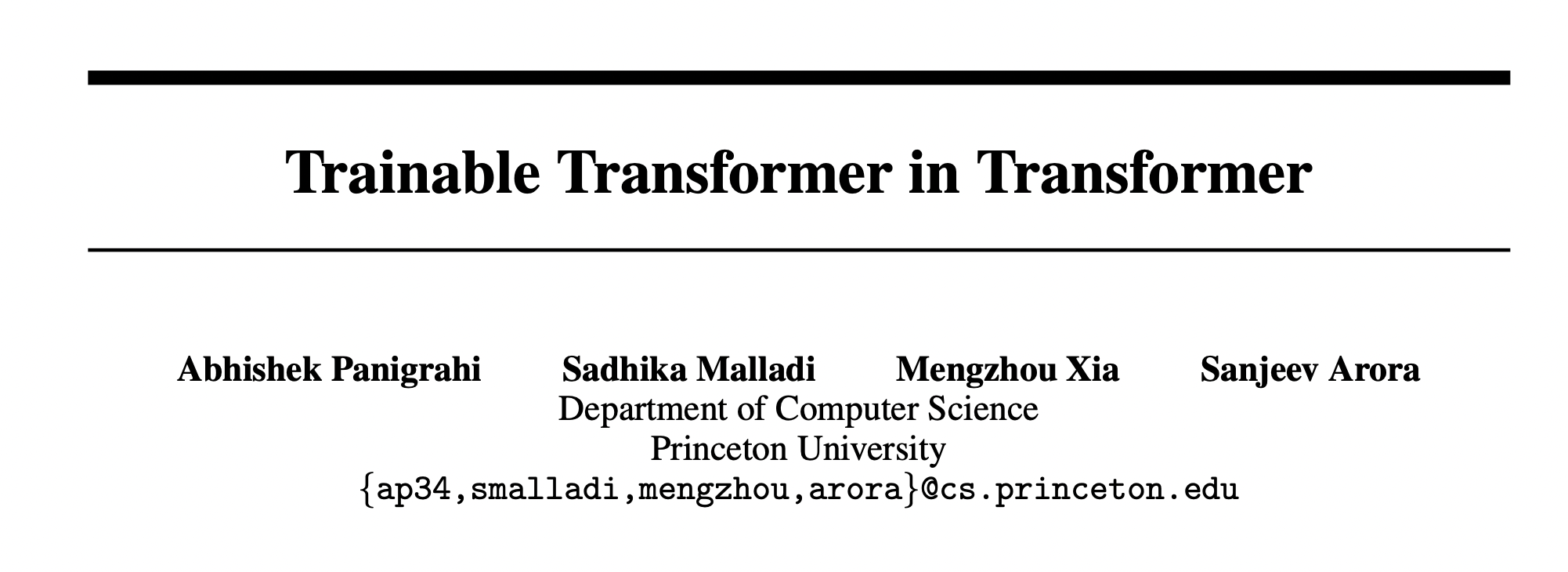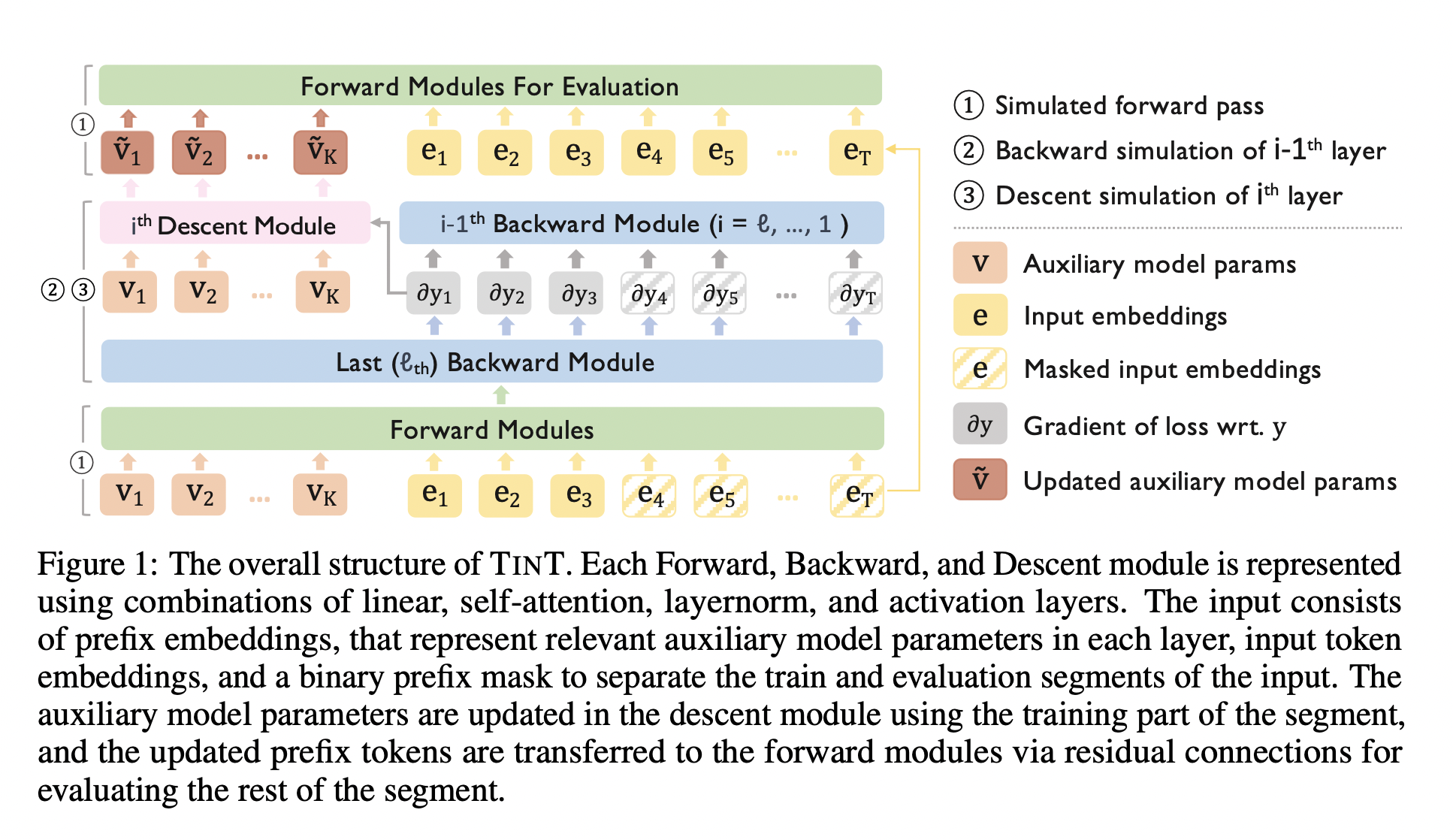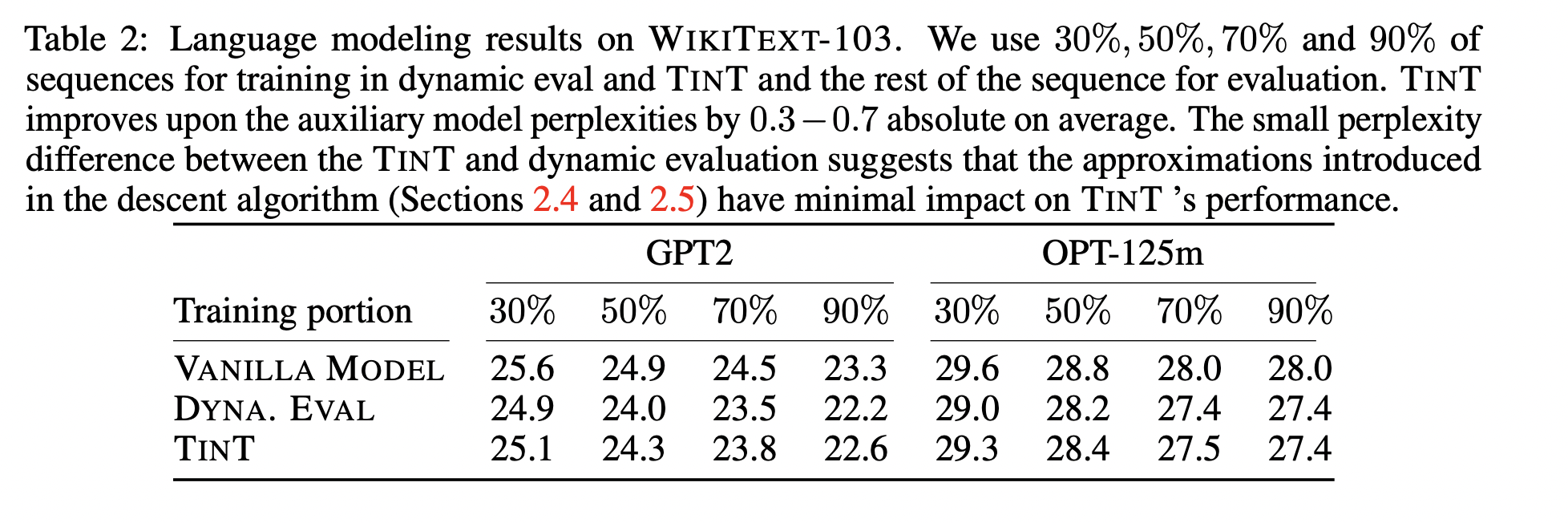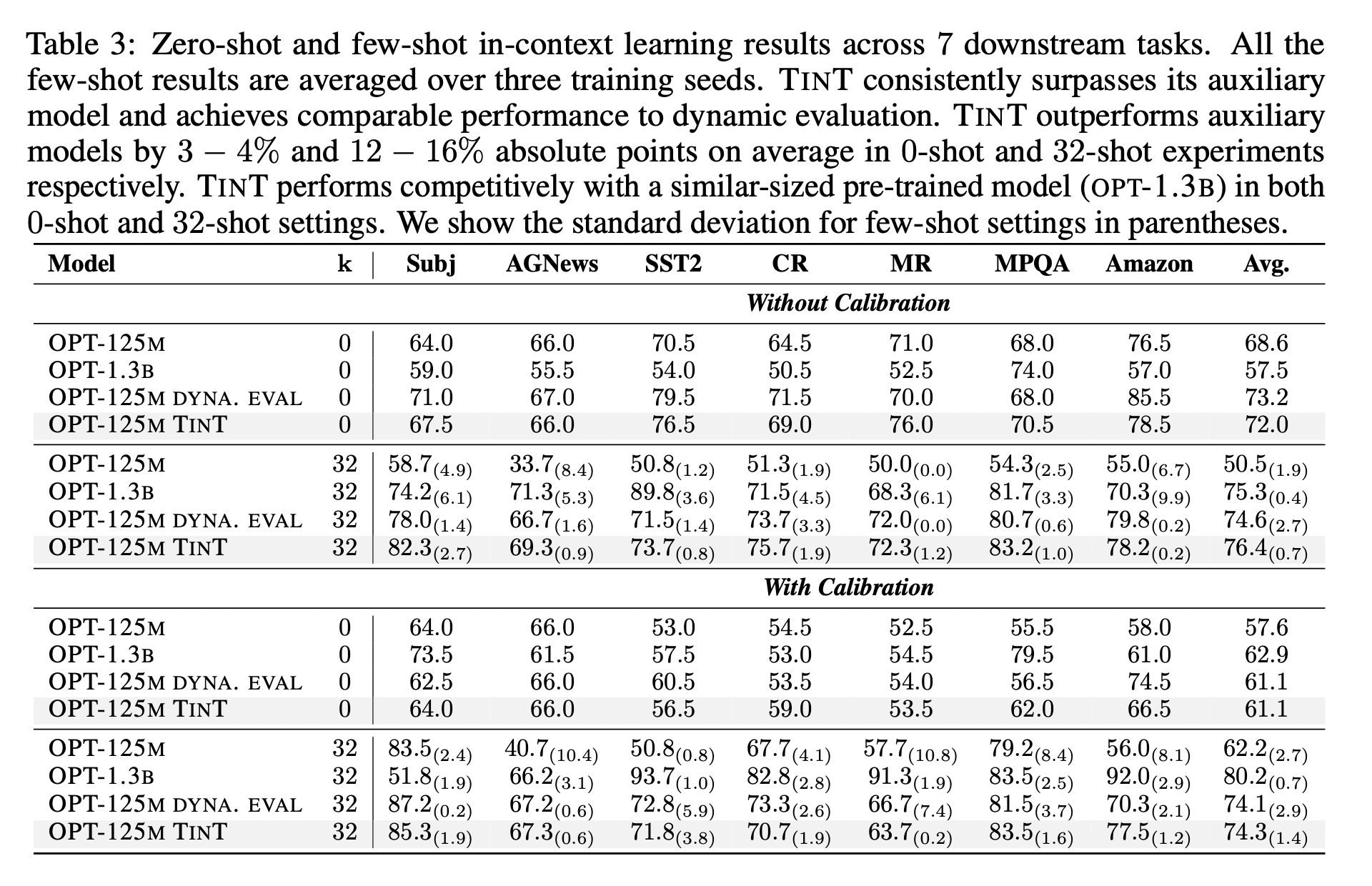Trainable Transformer in Transformer
Amin
July 2023


In-Context Learning
In-Context Learning?
- Happens when language models “learn” from given training exemplars in the context and subsequently predict the label of a test example within a single inference pass.
- Is believed to occur when the large (“simulator”) model mimics and trains a smaller and simpler auxiliary model inside itself.
- This work: An efficient(-ish) architecture capable of doing GD within itself and doing In-Context Learning (ICL), only using the components existing in Transformers.

TinT
Main Idea
- Linear, LayerNorm and Attention modules can all be implemented with a self-attention layer.
- Weights of the auxiliary model can be stored (and loaded from) the designated prefix embeddings.
- Back-propagation on the mentioned modules can be approximated with a self-attention layer.
- The approximation is terrible, but works in practice, which suggests that real models might not do actual "Gradient Descent", but something close to it.
Linear Layers
- Let \(W: D_{aux} \times D_{aux} \) denote the weight and \(x_t\) denote the token being operated on.
-
Naive Implementation:
- Go through each row of weight matrix sequentially.
- Put each entry of the row in \(\{v_i\}_{i}\) prefix embeddings.
- \(x_t\) will be in input embeddings
-
More efficient:
- Stack (shard) the operations by \(S\). The outputs will be sparse, and would need to be rearranged, which requires (not so expensive) computations.
Linear Layers
- To perform the dot product, use a self-attention module:

Layer Normalization


Computing \(\langle \partial_z, z \rangle z\) is expensive, and they instead approximate this gradient with a first-order Taylor approximation.
Layer Normalization


Computing \(\langle \partial_z, z \rangle z\) is expensive, and they instead approximate this gradient with a first-order Taylor approximation.
Softmax Self-Attention

Again, since the computation of \(\partial_{q_t}\) is expensive, they only back-propagate through \(\partial_{v_t}\) to compute \(\partial x_t\).
Experiments, Part 1

Experiments, Part 2

Implications
- A parameter-efficient architecture designed specifically for ICL is proposed. It requires only about 10x more parameters than the auxiliary model that it contains.
- Although 10x more parameters sounds absurd, it's the first proposed architecture that is actually efficient enough to be implemented and tested in practice.
- The performance achieved is similar to that of the auxiliary model itself, which suggests they might be going through similar procedures internally.
Thank You!
Trainable Transformer in Transformer
By Amin Mohamadi
Trainable Transformer in Transformer
- 299



